Everything You Need to Know About Training Your Cockatiel to Wear a Cockatiel Harness
Cockatiels are such wonderful birds and with a little bit of training using cockatiel harness they can do some amazing things. We'll show you how it's done.
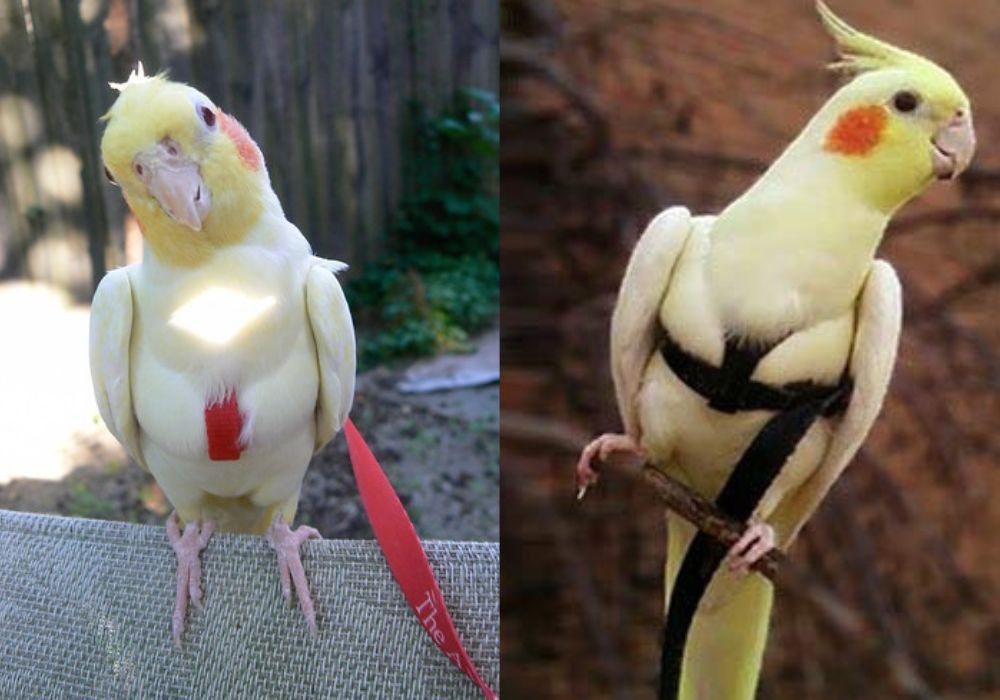
Having a bird as a pet is quite the experience! There’s nothing quite like having a feathered friend to keep you company, sing lovely songs, and provide endless entertainment. But, if you’re wanting to expand your bird’s horizons a bit and take them out into the great outdoors, you might want to consider training them to wear a harness. Harness training your cockatiel can be a fun and rewarding experience for both you and your bird! In this guide, we’ll take you step-by-step through the harness training process so your feathered friend can join you on all your outdoor adventures!
If you’ve been thinking about taking your cockatiel outside for some fresh air and outdoor exploration, then you know that it will require training them to wear a harness. While this may sound daunting, the process of getting your bird used to wearing a harness is actually quite simple. Here’s everything you need to know about training your cockatiel to wear a cockatiel harness. Following a structured course or step-by-step course can make harness training easier and more effective for both you and your bird.
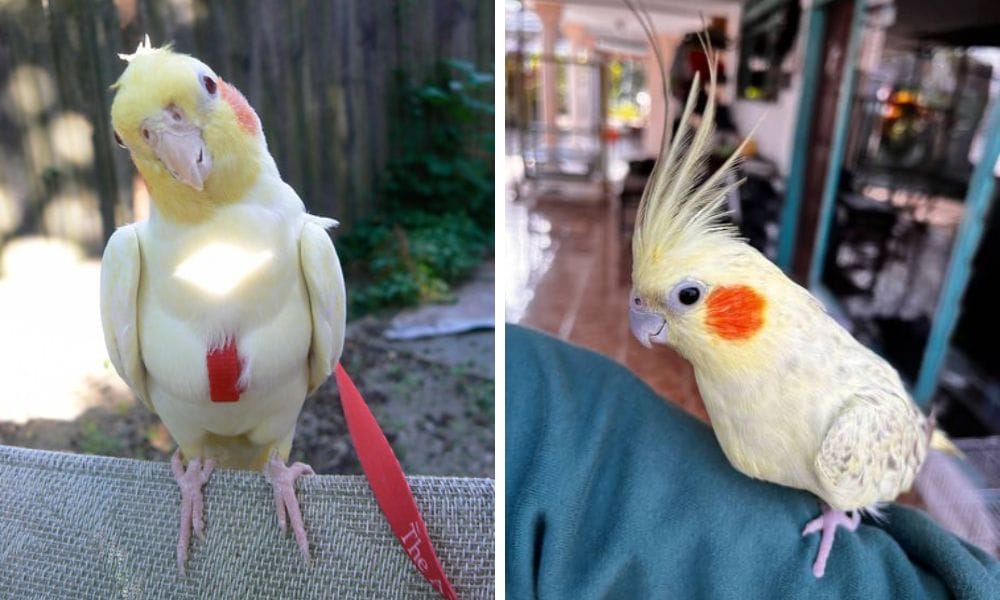
Introduction: Why Train Your Cockatiel to Wear a Harness?
If you’re interested in giving your cockatiel the chance to experience the world beyond their cage, harness training is the perfect solution. Training your bird to wear a harness, such as the popular Aviator harness, opens up a whole new world of safe outdoor adventures. With a harness trained cockatiel, you can let your bird fly, stretch their wings, and enjoy exercise in a controlled environment, all while ensuring their safety. Harness training isn’t just about fun—it’s also a great way to strengthen the bond between you and your bird, providing mental stimulation and physical activity that keeps your cockatiel happy and healthy. Whether you’re just starting out or have always wanted to explore the outdoors with your feathered friend, investing time in harness training means you can both enjoy new experiences together, worry-free.
Choosing the Right Harness and Leash
When it comes to choosing the right harness and leash for your cockatiels, there are two main factors that you should consider – comfort and safety. Look for a well-made, lightweight, adjustable harness with secure buckles so that your bird can’t escape from it easily. Harnesses come in a variety of colors, including blue and purple, to suit your preferences. The leash should be made from soft materials such as cotton or leather, and it should be at least 10 feet long so that your bird can move around freely without feeling restricted. In general it is easier to train birds on larger harnesses - so having a larger harness (minimum 6 foot leash) will facilitate training.
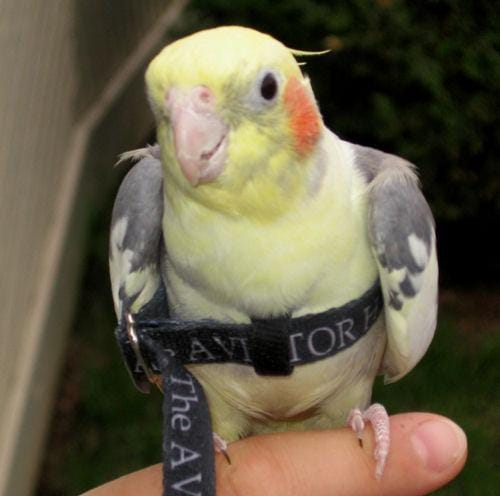
When considering size and fit, check the available sizes and consult a size chart to ensure the right fit for your cockatiel. Harnesses are also available in sizes suitable for larger birds like macaws and other parrot species, so you can find the right option for any bird.
You should purchase brand new, undamaged item to ensure that harness functions as it should. When you order or buy a harness, make sure to specify the correct size and color to ensure a proper fit and satisfaction with your order. Please avoid handmade items since these harnesses can cause injury to your pet birds. The Aviator Bird Harness and Leash have prompted others to capitalize on its success and produce low quality knock off replicas all over the world. The Original Aviator Harness is both safe for your bird and escape proof, so you and your bird can focus on having fun and fly outdoors. Check out our Blog and YouTube channel for more information.
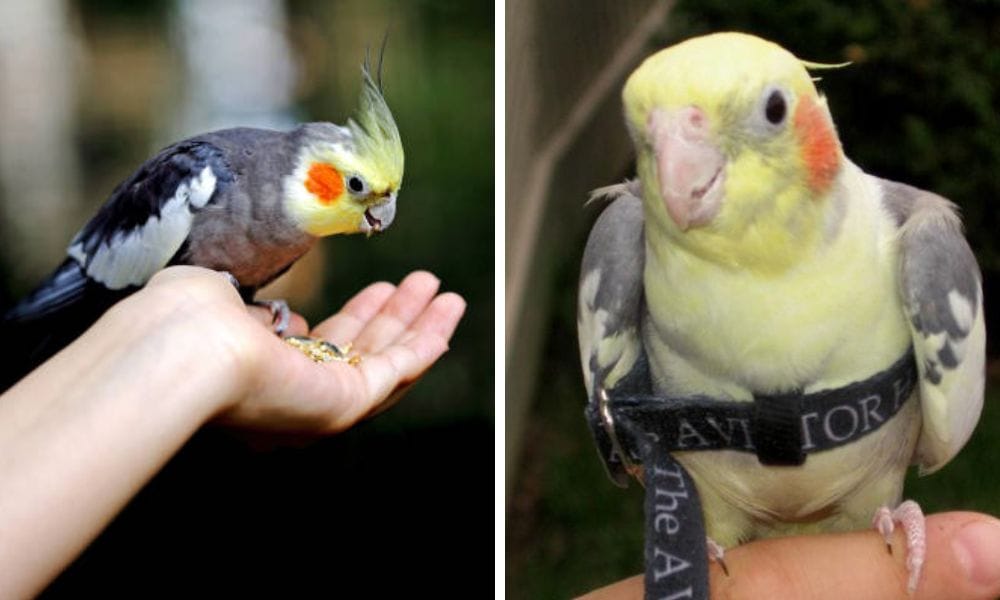
Preparing Your Cockatiel for Harness Training
Before you begin harness training, it’s important to set your cockatiel up for success. Start by introducing the harness slowly—place it near your bird’s cage so they can see and get used to it in their daily environment. You might even wear the harness yourself or gently drape it over your hand to show your cockatiel that it’s nothing to fear. When choosing a harness, look for one that’s specifically designed for small birds, like cockatiels. Escape proof harnesses made from lightweight, durable materials are best, as they keep your bird secure without weighing them down. Always check a size chart to ensure you select the right size for your cockatiel’s body type and weight. For example, a small bird weighing around 86 grams might need a size 5 Flightsuit or a size 4 Jungle Wear harness. Taking the time to choose the right harness and introduce it gradually will make the training process much smoother for both you and your bird.
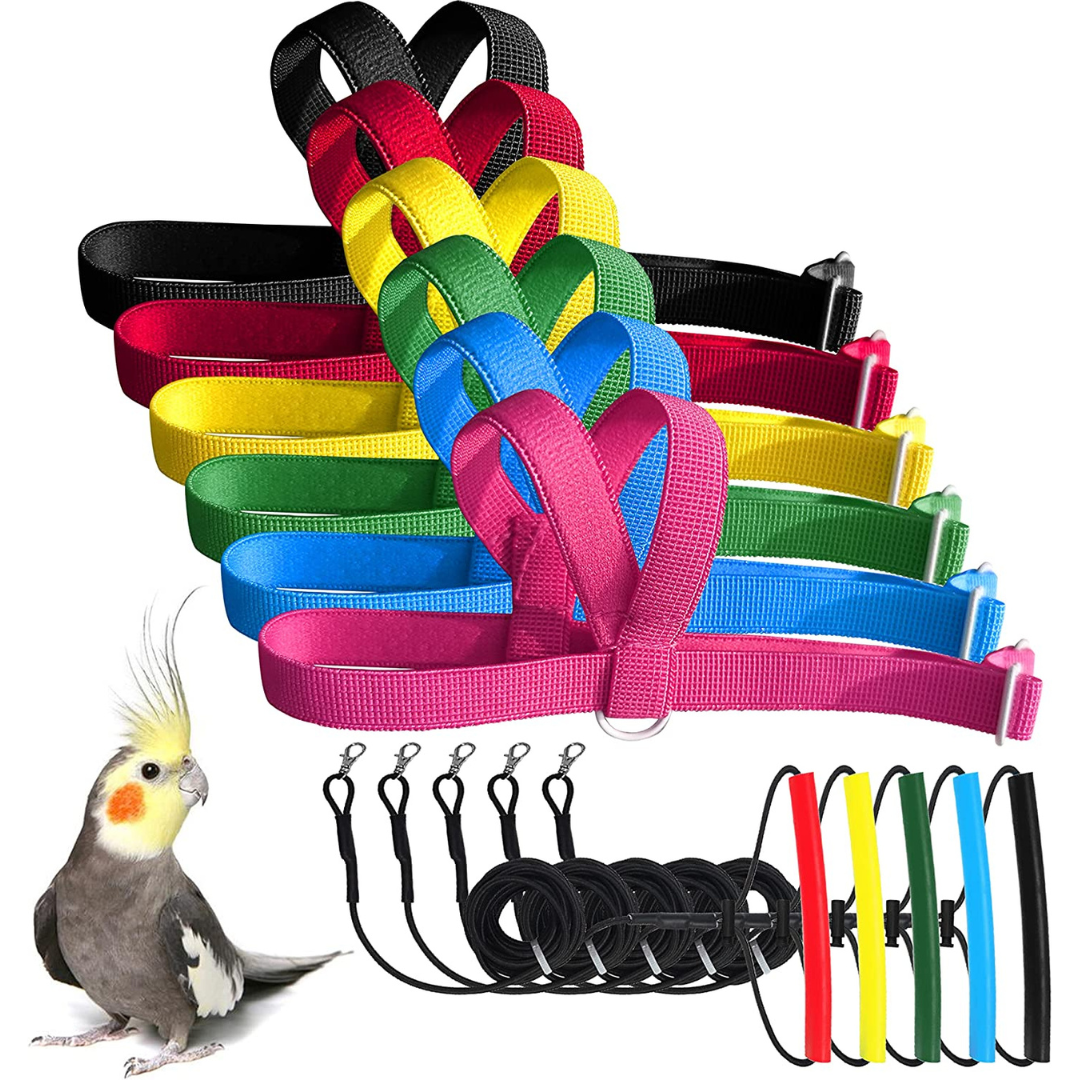
Introducing the Harness and Leash
Once you have chosen the right harness and leash for your cockatiel, the next step is introducing them to their new equipment. Start by placing the harness on top of their cage for several days so that they can get used to seeing it there. After that, let them explore the harness by offering treats while they are inside of it (with supervision). Allow the harness to be worn for short periods so your bird can gradually get used to the feeling. This will help them associate positive feelings with wearing their new gear. Be ready to remove the harness if your bird shows any signs of distress, as removing it can help calm them and maintain trust.
Different parrots, or even each person’s bird, may react differently to the introduction process, so patience and careful observation are important for successful harness training.
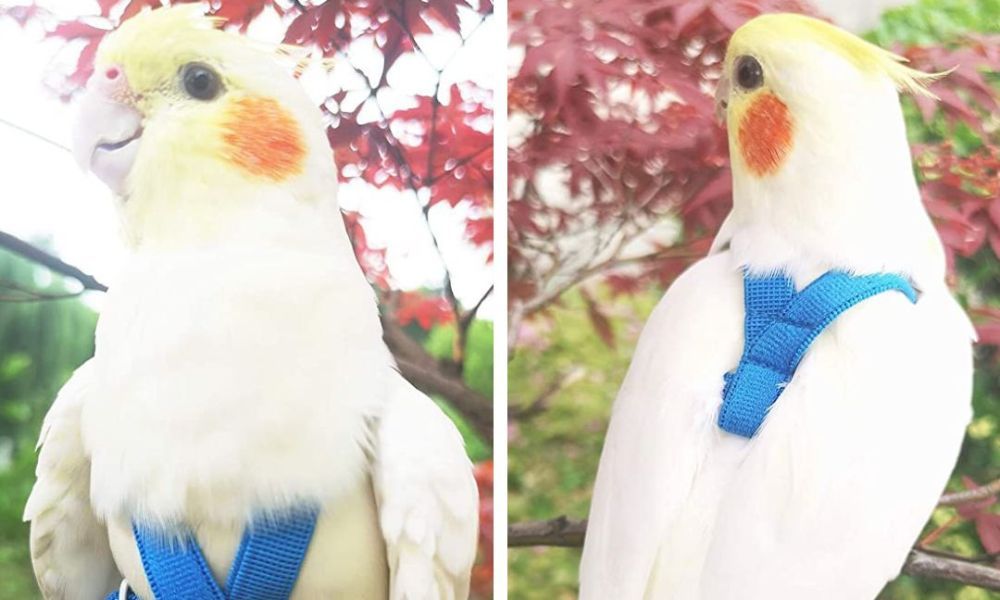
Training Your Bird to Wear a Cockatiel Harness
Once your cockatiel is comfortable around the harness, it’s time to start the actual training. Begin with short sessions, allowing your bird to wear the harness for just a few seconds at first, and gradually increase the time as they become more relaxed. Use treats and gentle praise to encourage your cockatiel each step of the way. When your bird is ready, introduce the leash—choose a comfortable, lightweight leash that won’t restrict their movement. Remember, the leash is not a means of control, but a way to keep your bird safe while they explore. Encourage your cockatiel to follow you, starting with short walks and slowly working up to longer outings. The key is to go at your bird’s pace, making each training session a positive experience. With time and patience, your cockatiel will learn to wear the harness and leash confidently, opening the door to new adventures together.
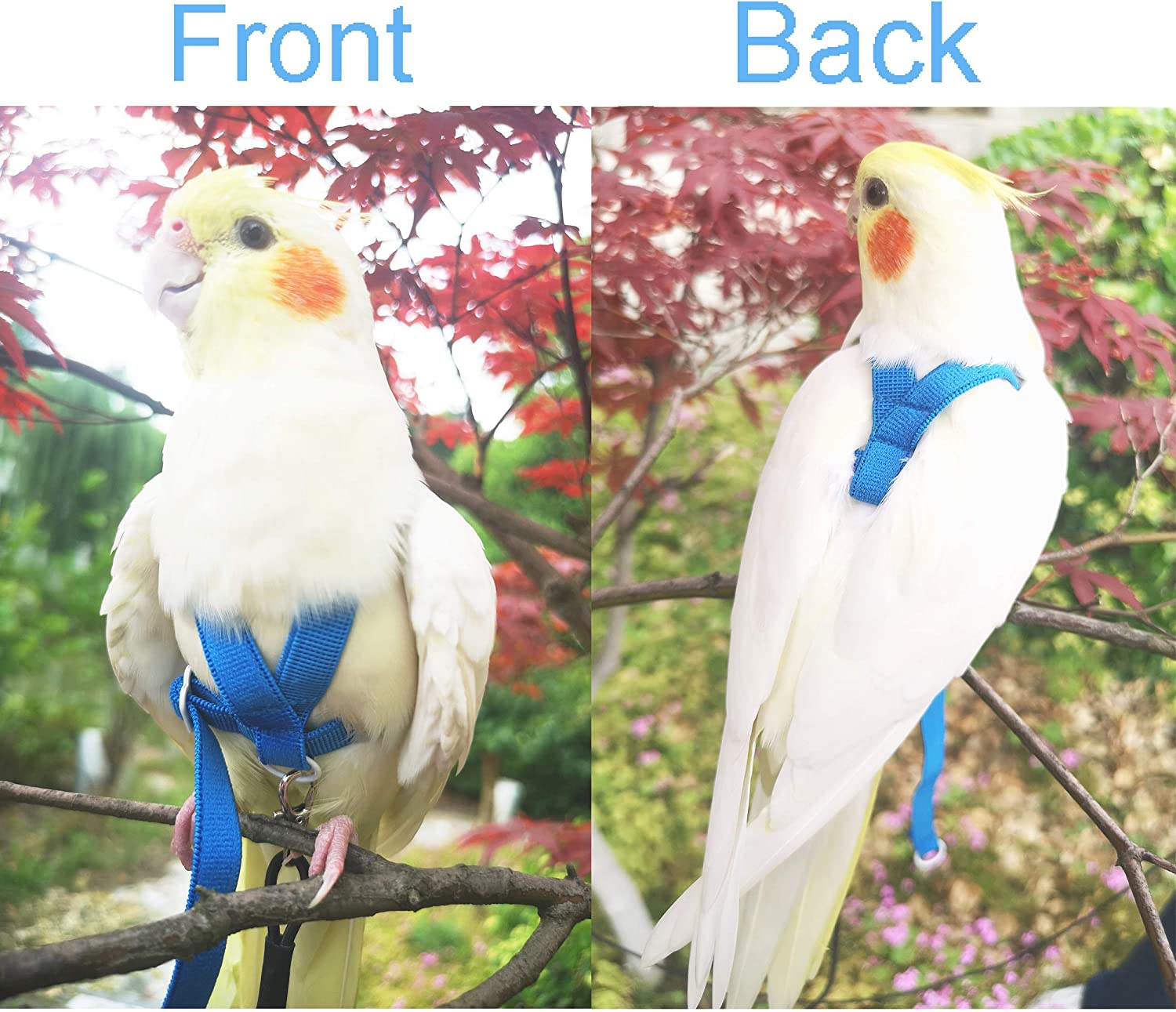
Overcoming Challenges in Harness Training
It’s normal to face a few bumps along the road when harness training your cockatiel. Some birds may be hesitant to wear the harness at first, but patience and positive reinforcement can make all the difference. Try introducing the harness in small steps, rewarding your bird with treats or praise for every bit of progress. If your cockatiel shows signs of stress or discomfort, take a break and try again later—forcing the process can make your bird more resistant. Safety should always be your top priority: never leave your cockatiel unattended while wearing the harness, and be mindful of potential dangers like other animals or sudden noises. By staying calm, patient, and attentive to your bird’s needs, you’ll help your cockatiel feel secure and confident during training.
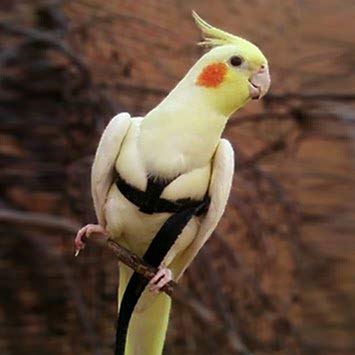
At the End: Enjoying Adventures Together
With dedication and a gentle approach, harness training can open up a world of possibilities for you and your cockatiel. Once your bird is comfortable wearing the harness, you can start exploring together—whether it’s a walk around the house, a trip to the park, or even some flying exercises in a safe area. Always keep your bird’s safety in mind, and take the time to ensure each outing is a positive experience. Harness training isn’t just about getting outside; it’s about building trust, encouraging exercise, and creating lasting memories with your feathered companion. So why not start your training journey today? With the right harness and a little patience, you and your cockatiel can look forward to many fun and safe adventures together.
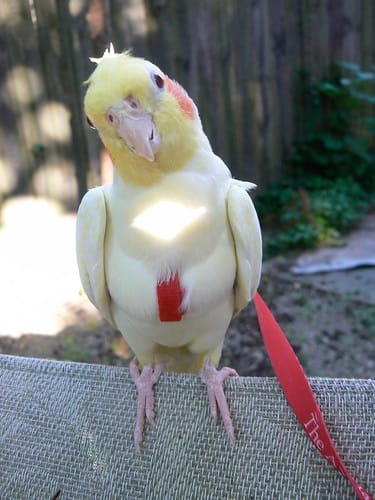
Training Your Bird To Wear Cockatiel Harness
Once your cockatiel is comfortable being around the harness, it’s time to start putting it on them during supervised sessions. Start by gently placing the open end of the harness over their head and down their back until they are fully enclosed in it. Praise them when they remain calm while wearing it, and give treats as rewards if necessary. Once they are comfortable wearing the harness in short sessions, gradually increase session length until they no longer display any signs of distress or discomfort while wearing it. These training techniques can also be applied to other parrots, not just cockatiels.
Step One: Getting Your Cockatiel Used to the Harness
First things first - it’s important to let your bird get used to the harness in a neutral setting. Lay the harness near your bird’s cage or play area and let them explore it on their own time. They may be hesitant at first, but encourage them with treats or praise when they show interest. After a few days or so, move on to the next step.
Step Two: Practice Putting on and Taking off the Harness
Now that your bird is curious about the harness, it’s time to start practicing putting it on them. Start with just a few minutes at a time, gradually increasing the amount of time they wear the harness as they become more comfortable with it. Practice putting the harness on and taking it off a couple of times during each session to help your bird get used to the process. It’s important to let your bird dictate the pace of the training, as pushing too hard too soon can lead to fear and distrust.
Step Three: Associate the Harness with Positive Experiences
One great way to make your cockatiel more comfortable with the harness is to associate it with positive experiences. For example, put the harness on them right before giving them their favorite treat or taking them on a fun outing. Use lots of treats and positive reinforcement, and be sure to praise your bird with words like 'good' when they cooperate. This will help them start to see the harness as something enjoyable rather than scary.
Step Four: Practice Walking with Your Bird While Wearing the Harness
Once your bird is comfortable wearing the harness for longer periods of time, it’s time to start practicing walking with them. Start in a quiet, low-stress environment and take things slowly. Some birds may take to walking on a leash right away, while others may need a bit more coaxing or practice. Always praise and reward your bird for their efforts! Repeat the training process many times and be patient, as it can take a lot of practice for some birds.
Step Five: Enjoy the Outdoors Together!
Now that your bird is fully harness-trained, it’s time to enjoy the great outdoors together! Take your bird on walks, picnics, and other outdoor adventures, always keeping safety in mind. Always hold onto the leash securely and never let it drop, as this could allow your bird to fly off. Remember, it’s important to keep a close eye on your bird while they are out and about - even the best-trained bird can get spooked or fly off unexpectedly. So, be sure to bring along a leash and a close eye on your feathered friend!
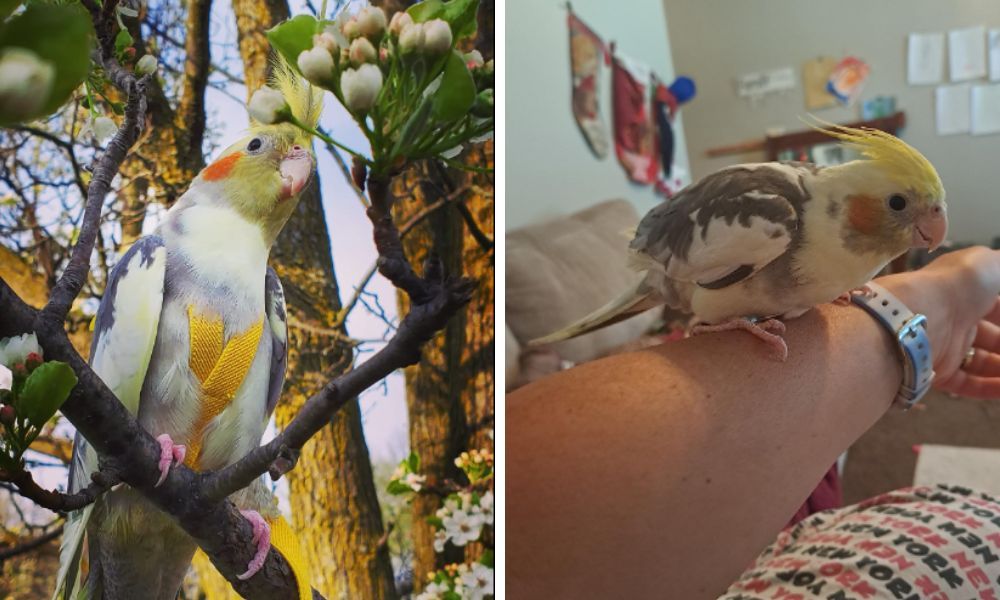
At the end...
Training your cockatiel to wear a harness may sound like an intimidating task at first but with patience and an understanding of what works best for both you and your bird, you will find that teaching them how to properly use one isn't too difficult after all! With time and practice, both you and your pet will soon be enjoying all sorts of outdoor adventures together! By following these simple steps outlined in this article, we guarantee success in teaching your bird how to properly use its new gear!
Training your cockatiel to wear a harness may take a bit of patience and practice, but the rewards are well worth it! Being able to enjoy the great outdoors with your feathered friend is a wonderful experience that you won't regret. Just remember to be patient, go at the bird's pace, and always keep safety in mind. Happy harness training!
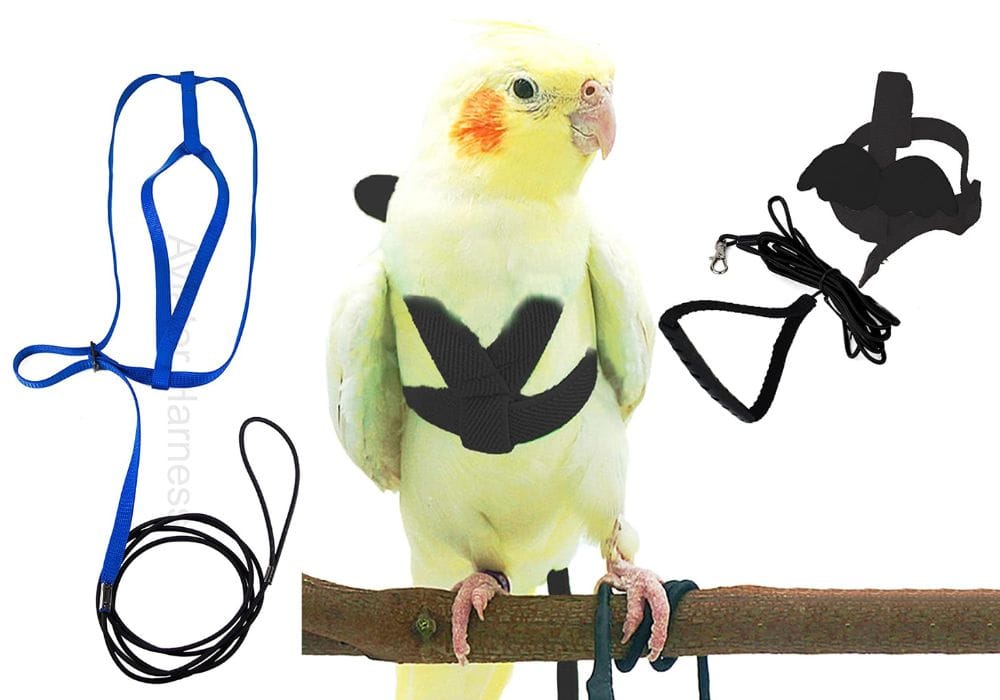
If you’re the proud owner of a cockatiel, you know that they are inquisitive and adventurous birds. Taking them outside for some fresh air may be great for them - but it can also be dangerous without the right accessories. Protect your feathered friend with the best harnesses on the market today! Click the link below to see our selection of top-rated harnesses that have been tested and recommended by fellow cockatiel owners. Don't wait - get peace of mind knowing that your pet is safe and secure when out exploring!

